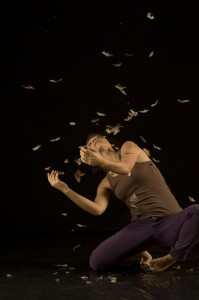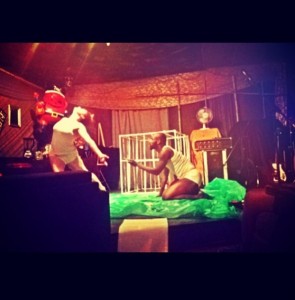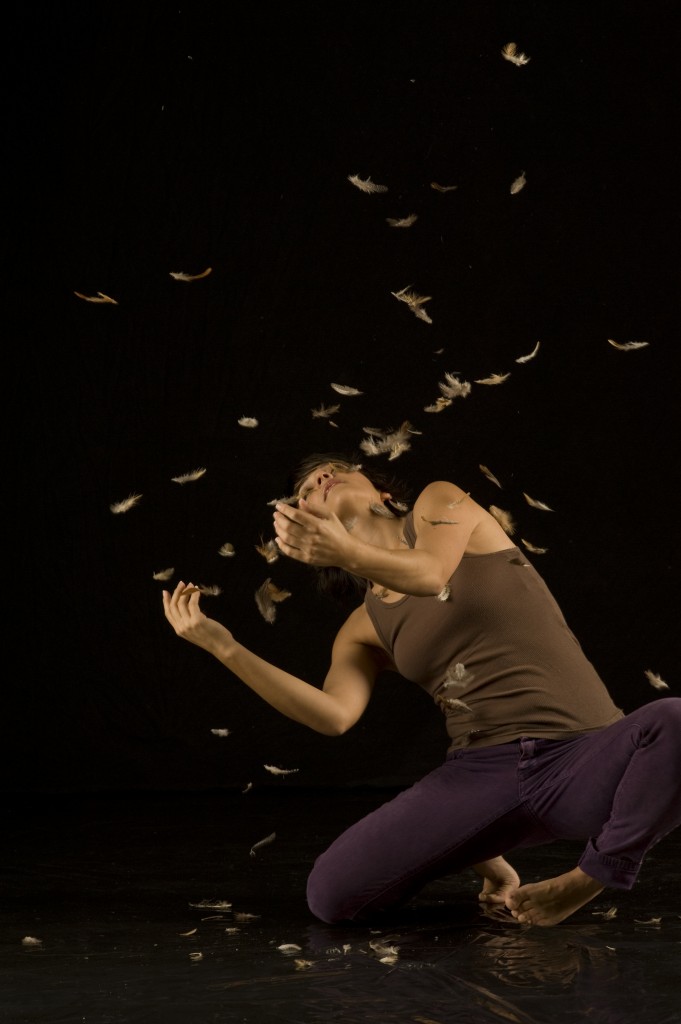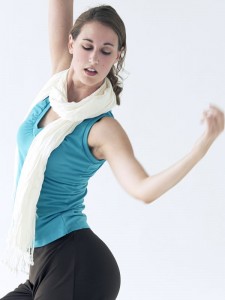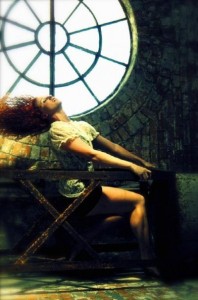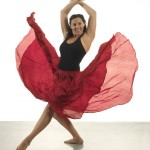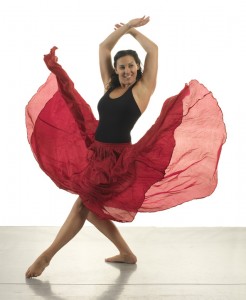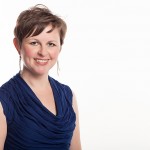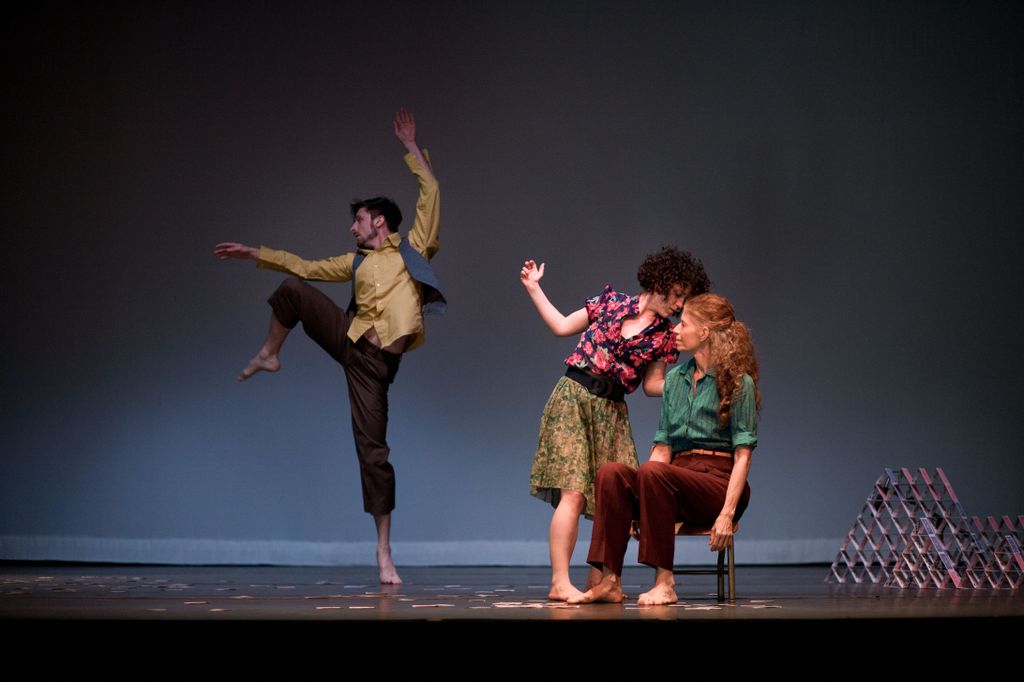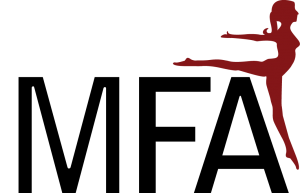 After the Master: The Post-Grad School Rut
After the Master: The Post-Grad School Rut
In my last year of graduate school, I made it a point to try and develop a set personal movement practices that I could take with me after I graduated. This was my best attempt at thwarting the drop-off of creative stimulation that I had heard many of my peers experience once they graduated. I had imagined creating a single perfect set of both biomechanical warm-ups and creative practices that would allow me to remain creatively engaged when I was no longer able to attend the many classes grad school afforded me. I wanted to DEFEAT THE RUT!
The main change in my perspective between then and now is that, in this year since grad school, I realized that I never really needed a single set of exercises. How limiting! Over the course of the year, I began to understand that my body and circumstances had changed so often that doing so would be like trying to fit a square peg in a round hole, and into an oval hole, and in a star-shaped hole, et cetera. I have accepted that there is no way to be engaged with a creative practice that equals that of graduate school. Even a substantial career outside of graduate school is different (not better or worse) and requires different things of your creativity and body. Ah, the things I could have only learned outside of school. Abundance can teach us only so much.
So, serendipitously, I realized not too long ago that I already had the perfect set of tools to create a movement practice anywhere, any time. The breadth and depth of exposure that my cohort had to somatic and creative practices, as well as those I sought out on my own, were, and still are more than enough to pull from. Without my knowing it really, I had been filling my personal practice grab bag the whole time. You may think it obvious, but, silly me. I suppose I had been so focused on “the doing” of grad school, that I hadn’t realized I was also keeping not only written documentation of it all for future reference, but a physicalized one as well. If I hadn’t written the somatic practice or creative exercise into my movement history during grad school, I at least knew where to look for more information. If I did retain a physicalized memory of any one practice or exercise, it must have been an important one!
For the year after graduation, I hadn’t realized I had done this. I thought it had all left me. I didn’t know I had done a majority of the work leg work already.
I was stuck, mourning the loss of the true hot bed of creatively
that I had enjoyed so much in Denton, Texas.
And… that’s okay. I spent a lot of time blaming myself and my program for not giving me the tools I thought I needed. Why, upon graduation had I not set myself up with a career in dance? Why hadn’t my professors taught me this or that? Why didn’t I just seek it out myself? Why was the condition of my body changing and why was I letting it happen? This is something I chalk up to my youth and lack of creative career experience prior to grad school. Between finishing my undergraduate degree and beginning my graduate studies, I had let my creative self atrophy along with my physical condition. Much less dancemaking, much more teaching and for low or no pay. It was very disheartening. I assumed for the past year, that I was doing it all over again.
It certainly seemed that way on the surface. I had to get a job in reception to pay the bills. I wasn’t learning a new dance or creating a new dance or going to classes. Only, again I say it’s impossible to mimic the academic environment’s many characteristics. Unless you’re in New York City or the Pacific Northwest, its unlikely that you have access to more than one truly engaging, rigorous contemporary dance class per week. You may have NO access to a somatics class outside of yoga. If you ARE in those cities, you may not be able to afford to take class regularly. And it’s okay. I was given many things that I held onto during grad school that would only be unlocked by the serendipitous entrance of a person into my life that ended up becoming a very close friend.
I owe many thanks to a single woman who helped me acknowledge and re-engage with my physical and creative self. Unlike in grad school though, she had inspired me to do so not with the intention of becoming a better dancer, not with the intention of becoming more beautiful or flexible or strong. It was, for the first time in my life, purely (and intentionally) for joy… for the love of moving and feeling and thinking with my body… and for the love of encouraging people who didn’t consider themselves dancers to understand their bodies better. Sometimes I was able to find this sweet spot in classes during school here and there, but it was always with the understandable agenda of becoming a better dancer. Rarely was it for joy and fulfillment alone.
My former roommate, who is not a dancer, often requested to do partners yoga with me for fun, sang, stretched and danced around in the house, knew how to exercise joyfully outside whether it was 10 degrees below zero or a 95 degree scorcher, and who encouraged me to pick up painting for the first time in my life. She openly asked for help with certain ailments or asked questions about parts of the body that made her curious. She and I often talked about the Philosophy of the Body course she was taking. This new perspective on a physicalized, healthy and happy body was something I hadn’t experienced as fully in all my years of gymnastics, colorguard and dance. I was lucky to have such a positively-physicalized person in my life to learn from.
This solution for anyone who may experience their own “Post Grad School Rut” is not really a one-size-fits-all solution, I suppose. My particular circumstances were unique and the fortunate entrance of my friend into my life happened to be what I needed at the time.
However, what I would share with my younger self if I could can be summed
up by an excerpt of an interview between
Stephen Colbert and Patrick Stewart, as silly as it may sound:
Colbert: If you, Patrick Stewart, could send a message back to younger Patrick Stewart, what would you warn Patrick Stewart about Patrick Stewart’s future?
Stewart: It’s very, very simple because I didn’t have much fun as a kid. I was always responsible … I would go back, and I would say ‘Patrick, CHEER THE **** UP!’
My goal here is also simple: If you find yourself in The Rut, be easy on yourself. Especially if you are just launching your career whether its as a teacher, dancer, choreographer or any combination of them all. You already made it through the gauntlet. Your life will change, possibly dramatically and its one thing to prepare for this mentally; it’s entirely different to go through it and flourish as a result. You cannot recreate the rigour of grad school in a day, or in years, so take it easy. You’ll figure it out. If you were fortunate enough not to experience The Rut, then please reach out to the people you cared about in school and catch up with them. You never know who may need you.
Next week we will hear from Gabrielle Aufiero. This woman took a path I hadn’t seen before after grad school by entering further training to become a teacher with Teach for America while working with a North Texas dance company called Simple Sparrow. Her steadfastness, professionalism, as well as her thoughtful and precise movement style are difficult to rival. I can’t wait to share her thoughts with you all!
As always, please don’t hesitate to contact me with any further questions or thoughts at meganyankeedance@gmail.com
Megan is an indie dance artist that seeks opportunities to make and present dances in alternative spaces in order to expand the reach of concert dance. She is committed to presenting work and curating concerts in houses, busy street corners, warehouses, dance for film, online and in visual art galleries. She has performed and presented work nationally and internationally at the Nomad Express Multi Arts Festival in Ouagadougou, Burkina Faso produced by Olivier, the Sonic Arts Research Center in Belfast, Northern Ireland, American Dance Festival, American College Dance Festival, Texas Dance Improvisation Festival, Movement Intensive in Composition and Improvisation in Lancaster, PA, Emerge and Exchange Dance Festivals in Tulsa, OK, {254} Festival in Waco, Texas, Out of Loop Festival in Addison, TX, and the Rogue Festival in Fresno, CA. She has had the honor of performing in works by Christie Nelson, Amie LeGendre, Larry Keigwin, Michael Foley, Jordan Fuchs, Sandy Mathern-Smith and Sarah Gamblin.
Megan holds (and runs with) an MFA in Dance from Texas Woman’s University and currently lives in Columbus, OH with her partner, John Osburn and their two dogs, Weecho and Lucy.

